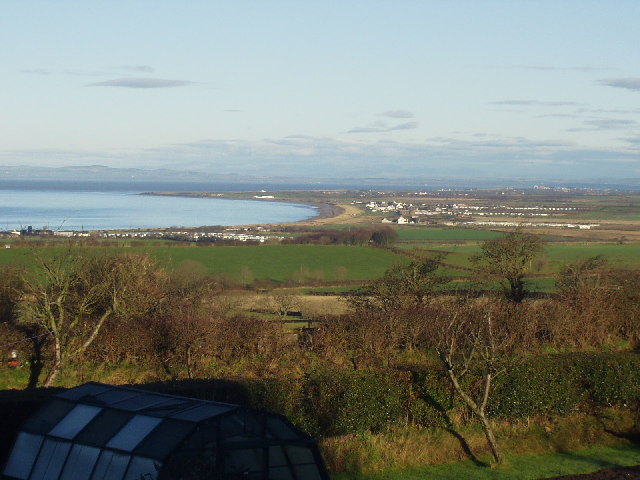In the 10th century the Vikings were expelled from Ireland and
they set sail in search of a new homeland.
Rumour has it that it was at Allonby that they landed, and here they set
up a relatively peaceful community.
Later in its history, Allonby became an important centre for herring
fishing, and other economic activities included salt making, weaving and
shipbreaking. There was also a thriving
smuggling business during the 17th and 18th centuries, with spirits, tobacco
and textiles being sneaked in from Scotland,
Ireland
and the Isle of Man. During the 19th
century the village
of Allonby became a
popular resort. The Old Baths, built in
1835 by a group of rich Quakers, offered a variety of hot and cold sea water
baths, while on a separate floor there was a ballroom. The grand, colonnaded building still stands
proud in the centre of the village, although its days as a bath house are long
gone. Another prominent building in the
village is North Lodge with its adjoining former Quaker almshouses. The Quakers were big in Allonby during the
18th and 19th centuries and aside from the baths and the almshouses, other
reminders of their presence in the village include a 17th century cottage
turned into a Quaker Meeting House in 1703 and a Reading Room built in 1862 on
the site of the weaving sheds. At the
height of Allonby's popularity as a resort there were 10 inns in the villlage, which were
frequented by Cumberland's
elite. Charles Dickens visited in 1857
with fellow writer Wilkie Collins during a walking tour. Today, the main draw
is the extensive sandy beach of Allonby
Bay, with views across the Solway
Firth to the Galloway Hills of Scotland,
and inland to the mountains of the Lake District. Flocks of oystercatchers can sometimes be
seen wheeling around in the sky above the sea.
On a clear day the Isle Of Man can be
discerned on the horizon. The village
website has a collection of photographs, including some fascinating old black
and white images.
Map of the area.
 | |
| Allonby and Allonby Bay from the south - geograph.org.uk - 98449. Photo by Ally McGurk, via Wikimedia Commons |
No comments:
Post a Comment